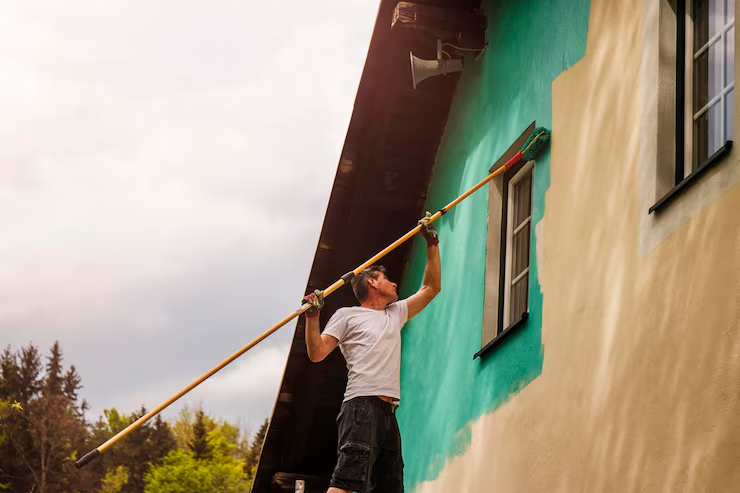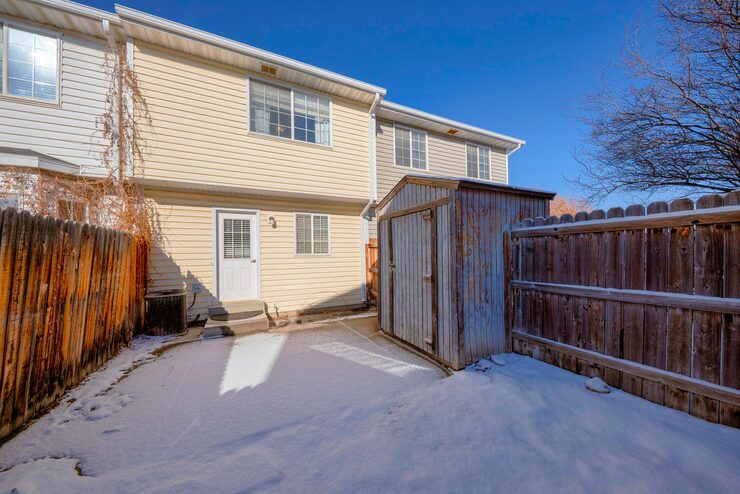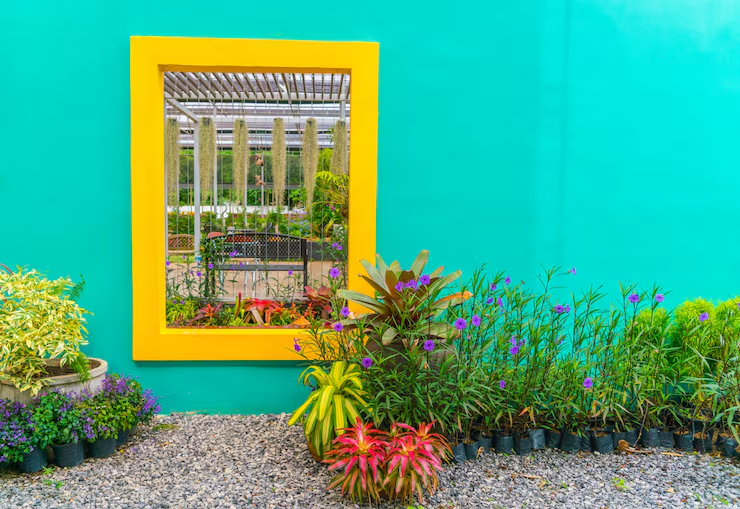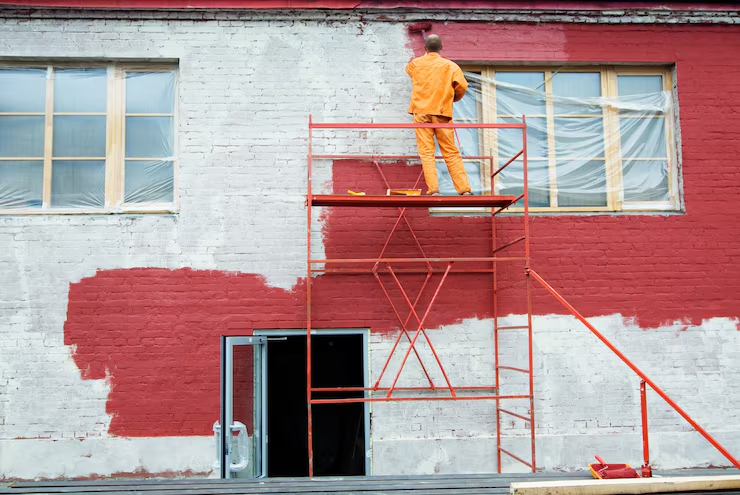Menu

A fresh coat of paint is one of the best ways to protect and beautify your home’s exterior. But timing matters just as much as the quality of the paint itself. Painting in the wrong weather conditions can lead to peeling, cracking, bubbling, or poor adhesion that shortens the lifespan of your project.
So, when not to paint outside? Temperature, humidity, sunlight, and seasonal conditions all play a big role in determining the right moment. Understanding these factors will help you avoid wasted time and money while ensuring your home looks its best.
Here are ten paint choices that redefine the look of a classic man cave.
✔ The ideal temperature for exterior painting is 50°F–85°F, with 60–70°F being the sweet spot.
✔ Painting below 50°F with standard paint is too cold and leads to adhesion problems, cracking, or peeling.
✔ Low temp exterior paint allows safe painting down to 35°F, though mild conditions are always better
✔ Avoid rain, humidity, high winds, or direct sunlight, as these conditions all affect drying and curing.

Temperature is one of the most critical factors in exterior painting. Standard latex and oil-based paints typically perform best when outdoor temperatures are between 50°F and 85°F. Within this range, paint can dry evenly and cure properly, creating a smooth, durable finish.
It’s also important to remember that surface temperature matters too. Even if the air feels warm, shaded siding or surfaces cooled overnight may still be too cold for paint. Always check both air and surface temperature before starting.
For most standard paints, anything below 50°F is risky, so knowing at what temperature you can paint outside is crucial. Advances in paint technology have led to products designed for colder weather—known as low temp exterior paint—that allow more flexibility in scheduling.
Cold weather interferes with the curing process, leading to:
If you’re facing a tight timeline and cooler weather, low temp exterior paint can be a game-changer once you know how cold is too cold to paint exterior. These formulas are specially engineered to cure at lower temperatures, often as low as 35°F.
While these paints open more options, they aren’t a complete solution. Even with low temp exterior paint, you should avoid painting during rain, heavy wind, or dramatic overnight temperature drops. Whenever possible, aim for mild, stable days to guarantee the best results.

The time of year plays a big role in exterior painting success. Here’s what to consider: with the global paints and coatings market projected to grow to nearly USD 304 billion by 2032, seasonal demand and industry trends highlight just how much timing influences both professional projects and DIY efforts.
Temperature isn’t the only factor. You should also avoid painting during:

You should avoid painting outside during rainy, humid, or very windy weather, as these conditions interfere with proper drying and adhesion. Temperatures below 50°F or above 85°F are also not ideal unless you’re using specialty paint. Direct, hot sunlight should be avoided, too, since it causes paint to dry unevenly and may leave streaks.
The best month depends on where you live, but generally late spring through early fall provides the most stable conditions for exterior painting. Northern regions may have a shorter painting window, while southern areas with milder weather can often extend into late fall. Always check the forecast and focus on temperature and moisture levels rather than relying strictly on the calendar.
Yes, 60°F is considered an excellent temperature for exterior painting because it allows paint to dry evenly and bond well to surfaces. As long as nighttime temperatures don’t drop below 50°F, you can expect smooth application and a long-lasting finish.
With regular exterior paint, 50°F is the lowest recommended temperature. However, some low-temperature paints are formulated to be applied at 35°F, as long as the weather remains dry and stable for a full day after painting.
The best time of day is mid-morning to mid-afternoon, when surfaces have dried from overnight dew and temperatures are steady. Seasonally, spring and fall are ideal since they offer mild weather, less humidity, and consistent drying conditions.
Painting your home’s exterior in Trumbull, CT, isn’t just about choosing the right color—it’s about choosing the right time. Poor weather conditions can shorten the life of your paint job and leave your home looking less than perfect. Knowing when not to paint outside is just as important as knowing the proper techniques.
At Trumbull House Painter Pros, we help homeowners make smart choices about timing, products, and application. Our team uses top-quality paints, including low temp exterior paint, to ensure flawless, long-lasting results no matter the season.
Ready to refresh your home’s exterior? Contact Trumbull House Painter Pros today for professional painting services and get a paint job that stands the test of time.